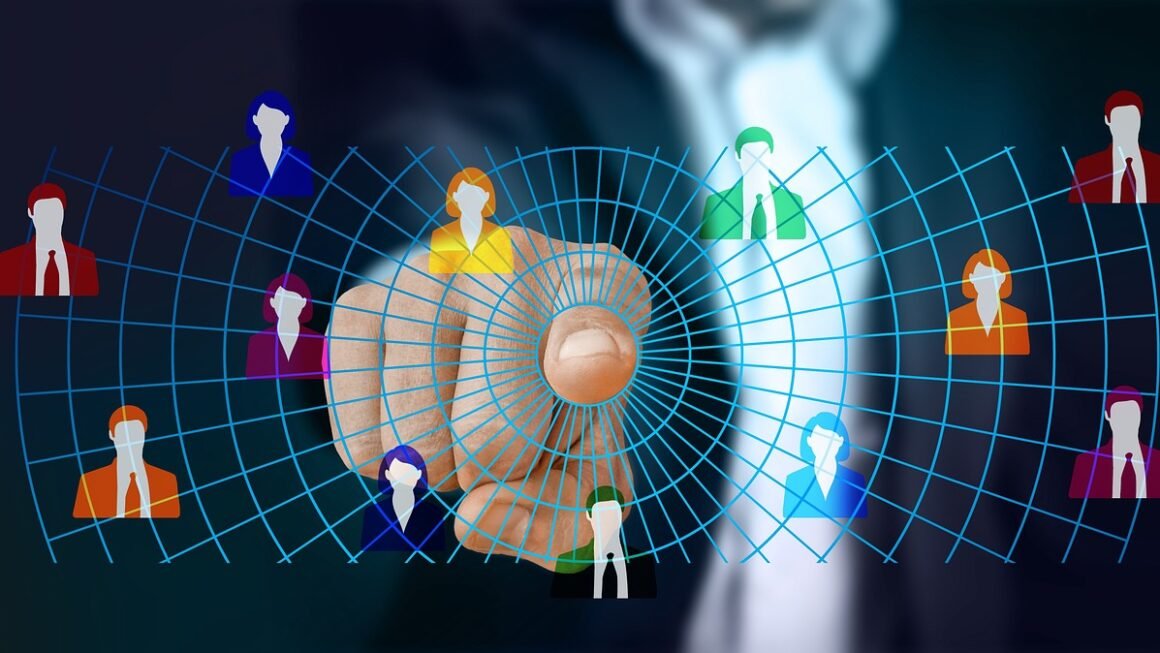The world is buzzing about Artificial Intelligence (AI), but behind the impressive feats of self-driving cars and personalized recommendations lies the intricate world of AI algorithms. These algorithms are the engine driving AI, enabling machines to learn, adapt, and make decisions. Understanding these algorithms is crucial for anyone looking to harness the power of AI, whether you’re a business owner, a data scientist, or simply curious about the future of technology. Let’s dive into the core concepts and explore how these powerful tools are shaping our world.
What are AI Algorithms?
Definition and Core Concepts
AI algorithms are a set of instructions that allow a computer to learn from data and make predictions or decisions without being explicitly programmed. They are the backbone of AI systems, enabling machines to mimic human intelligence.
- Learning from Data: AI algorithms use data to identify patterns, relationships, and insights. The more data an algorithm has, the better it becomes at making accurate predictions.
- Automation: These algorithms automate tasks that traditionally require human intelligence, such as image recognition, natural language processing, and decision-making.
- Adaptability: AI algorithms can adapt to new data and changing conditions, allowing them to continuously improve their performance.
Types of AI Algorithms
AI algorithms can be broadly classified into several categories, each designed for specific tasks and applications.
- Supervised Learning: These algorithms learn from labeled data, where the correct output is already known. They are used for tasks like classification (categorizing data) and regression (predicting continuous values).
Example: Training an algorithm to identify spam emails using a dataset of labeled emails (spam or not spam).
- Unsupervised Learning: These algorithms learn from unlabeled data, discovering hidden patterns and structures without any prior knowledge of the correct output. They are used for tasks like clustering (grouping similar data points) and dimensionality reduction (simplifying data).
Example: Using a clustering algorithm to segment customers based on their purchasing behavior.
- Reinforcement Learning: These algorithms learn by trial and error, receiving feedback in the form of rewards or penalties for their actions. They are used for tasks like game playing, robotics, and resource management.
Example: Training an AI agent to play chess by rewarding it for making good moves and penalizing it for making bad moves.
- Deep Learning: A subset of machine learning that uses artificial neural networks with multiple layers to analyze data. Deep learning excels at complex tasks like image recognition, natural language processing, and speech recognition.
Example: Training a deep learning model to recognize faces in images.
Popular AI Algorithms: A Closer Look
Linear Regression
- What it is: A simple yet powerful algorithm used to predict a continuous outcome based on one or more input variables.
- How it works: Linear regression finds the best-fit line (or hyperplane in higher dimensions) that minimizes the difference between the predicted values and the actual values.
- Practical Application: Predicting house prices based on square footage, number of bedrooms, and location.
- Actionable Takeaway: Linear regression is a great starting point for predictive modeling tasks. Understanding its assumptions and limitations is crucial for accurate results.
Logistic Regression
- What it is: Used for binary classification tasks, where the goal is to predict one of two possible outcomes (e.g., yes/no, true/false).
- How it works: Logistic regression uses a logistic function to model the probability of a particular outcome.
- Practical Application: Predicting whether a customer will click on an ad based on their demographics and browsing history.
- Actionable Takeaway: Logistic regression is ideal for scenarios where you need to predict a binary outcome. Feature selection and model evaluation are key to achieving good performance.
Decision Trees
- What it is: A tree-like structure that uses a series of decisions to classify data or predict outcomes.
- How it works: Decision trees recursively split the data based on the most informative features until a final prediction can be made.
- Practical Application: Diagnosing medical conditions based on patient symptoms and test results.
- Actionable Takeaway: Decision trees are easy to interpret and can handle both numerical and categorical data. However, they can be prone to overfitting, so techniques like pruning are necessary.
Support Vector Machines (SVM)
- What it is: A powerful algorithm used for both classification and regression tasks.
- How it works: SVMs find the optimal hyperplane that separates different classes of data while maximizing the margin between them.
- Practical Application: Image classification, such as identifying different types of objects in an image.
- Actionable Takeaway: SVMs are effective in high-dimensional spaces but can be computationally expensive. Kernel selection is important for achieving good performance.
K-Means Clustering
- What it is: An unsupervised learning algorithm used to group data points into clusters based on their similarity.
- How it works: K-means iteratively assigns data points to the nearest cluster center and updates the cluster centers until convergence.
- Practical Application: Customer segmentation, where customers are grouped based on their purchasing behavior.
- Actionable Takeaway: K-means is simple and efficient but requires specifying the number of clusters in advance. Techniques like the elbow method can help determine the optimal number of clusters.
Neural Networks
- What it is: A complex algorithm inspired by the structure of the human brain, used for a wide range of tasks including image recognition, natural language processing, and speech recognition.
- How it works: Neural networks consist of interconnected nodes (neurons) organized in layers. Each connection has a weight associated with it, which is adjusted during training to improve the network’s performance.
- Practical Application: Self-driving cars, which use neural networks to process sensor data and make driving decisions.
- Actionable Takeaway: Neural networks are powerful but require large amounts of data and computational resources. Understanding different architectures and training techniques is crucial for successful implementation.
How to Choose the Right AI Algorithm
Understanding the Problem
Before choosing an AI algorithm, it’s crucial to clearly define the problem you’re trying to solve. Ask yourself:
- What type of data do I have (labeled or unlabeled)?
- What type of outcome am I trying to predict (classification or regression)?
- What are the constraints of my project (time, resources, accuracy)?
Evaluating Algorithm Performance
Different algorithms have different strengths and weaknesses. Evaluate algorithm performance based on:
- Accuracy: How well does the algorithm make correct predictions?
- Precision: How many of the positive predictions are actually correct?
- Recall: How many of the actual positive cases does the algorithm identify?
- F1-Score: A balanced measure of precision and recall.
- Computational Cost: How much time and resources does the algorithm require?
Practical Tips for Algorithm Selection
- Start Simple: Begin with simpler algorithms like linear regression or decision trees before moving on to more complex ones like neural networks.
- Experiment: Try out different algorithms and compare their performance on your specific dataset.
- Consider Interpretability: If it’s important to understand how the algorithm is making decisions, choose an algorithm that is easy to interpret, such as decision trees or linear regression.
- Use Cross-Validation: Divide your data into training and testing sets to evaluate the algorithm’s performance on unseen data.
Applications of AI Algorithms in Various Industries
Healthcare
- Diagnosis: AI algorithms can analyze medical images and patient data to assist doctors in diagnosing diseases.
- Drug Discovery: AI algorithms can accelerate the drug discovery process by identifying potential drug candidates and predicting their effectiveness.
- Personalized Medicine: AI algorithms can tailor treatment plans to individual patients based on their genetic makeup and medical history.
Finance
- Fraud Detection: AI algorithms can detect fraudulent transactions by identifying unusual patterns and anomalies.
- Algorithmic Trading: AI algorithms can automate trading decisions based on market data and technical indicators.
- Risk Management: AI algorithms can assess and manage financial risk by analyzing market trends and predicting potential losses.
Retail
- Personalized Recommendations: AI algorithms can recommend products to customers based on their past purchases and browsing history.
- Inventory Management: AI algorithms can optimize inventory levels by predicting demand and minimizing storage costs.
- Customer Service: AI-powered chatbots can provide instant customer support and answer frequently asked questions.
Manufacturing
- Predictive Maintenance: AI algorithms can predict equipment failures and schedule maintenance proactively.
- Quality Control: AI algorithms can inspect products for defects and ensure consistent quality.
- Process Optimization: AI algorithms can optimize manufacturing processes to improve efficiency and reduce costs.
Conclusion
AI algorithms are revolutionizing industries by enabling machines to learn, adapt, and make decisions autonomously. By understanding the different types of AI algorithms, their strengths and weaknesses, and how to choose the right algorithm for a specific problem, you can unlock the power of AI and drive innovation in your field. As AI continues to evolve, staying informed about the latest advancements in AI algorithms will be crucial for staying ahead of the curve.



